Barberry Thunberg "Golden ring": description, planting and care
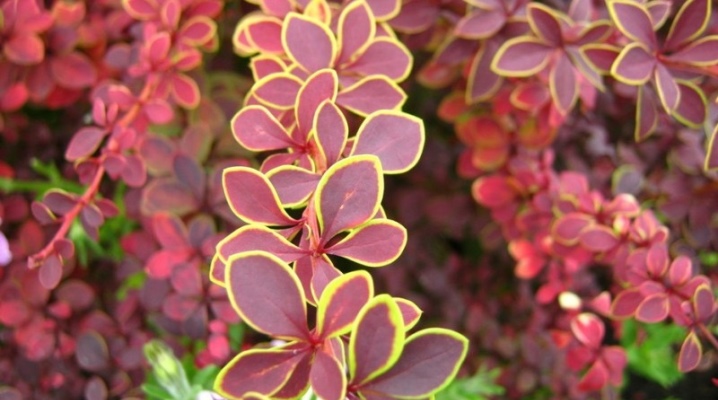
Barberry "Golden Ring" is a true decoration of the site and a rather unpretentious plant to care for. Its purple foliage looks good against the background of other deciduous crops, emphasizing the sophistication of the landscape. The description of the Golden Ring Thunberg barberry allows you to appreciate all the advantages, but in matters of growing this variety, many gardeners have problems. How to act correctly so as not to harm the plant?
Proper landing and careful maintenance are what the Golden Ring Thunberg barberry really needs. Its use in landscape design is also quite diverse. A fast-growing and relatively tall variety lends itself well to cutting, pruning, and suitable for planting in hedges. The ornamental shrub is well acclimatized for central Russia, is not afraid of frosty winters, looks harmonious both in private and public areas.
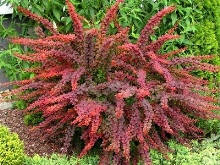
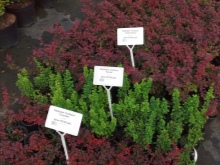
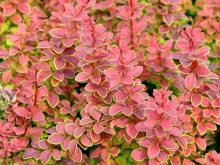
Peculiarities
Barberry Thunberg "Golden Ring" is a rather tall shrub, reaching 2-2.5 m in height and 3 m in diameter. The annual growth is about 30 cm, and by the age of 10 the plant is considered an adult. The description of the variety will be incomplete without a story about its unique leaf color. Their central part has a purple-violet color, acquiring crimson hues by autumn. On the edge of the leaf there is a golden-yellow border - the "ring", thanks to which the Golden Ring variety got its name.
Barberry Thunberg blooms in May, but not for long - about 2 weeks. The original fruits of a scarlet hue are already formed by autumn. During the flowering period, the bush is covered with yellow-red buds and looks even more decorative. Barberry berries are removed from the bush already with the onset of frost.
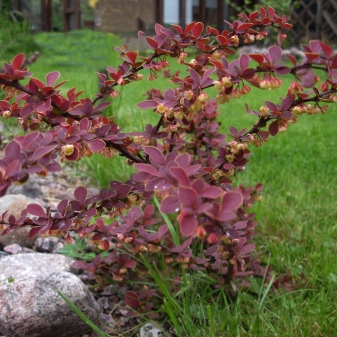
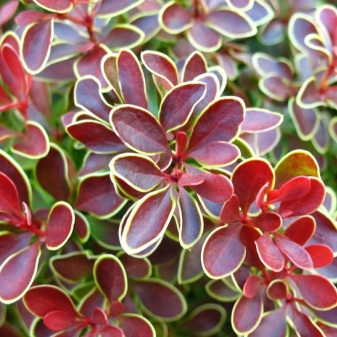
The variety has received international recognition, having received an award in 2002 from the British Royal Society of Gardeners.
Golden Ring belongs to the plants characteristic of Asia, and is most adapted to the temperate climatic zone of growth. In the Russian central zone, the Moscow region, Siberia, it grows no more than 1.5 m. The shoots are rather branched, at first they form a funnel-shaped, and then a spreading crown. The color of young branches is red, then they acquire a brownish-burgundy tone, thorns up to 1 cm long stand out on the surface.In some years, the border does not appear on the leaves, for the first time it is formed no earlier than 3 years from the moment of planting.
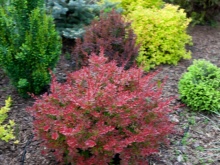


How to plant?
The cultivation of the Golden Ring variety Thunberg barberry does not require significant efforts. They begin to prepare for planting it in the fall, digging up the soil in the chosen place. The depth of reclamation is about 50 cm, complete removal of weeds is mandatory. The prepared soil area is sown with green manure - plants that emit nitrogen. It can be radish, mustard. They remain under the snow, and in spring, when digging up the earth, the seedlings are embedded in the ground, serving as a source of valuable trace elements.
Growing on overly alkaline soils is contraindicated for Barberry Thunberg. If the acidity is high, it is recommended to liming the area by adding up to 400 g of lime to the planting pit.
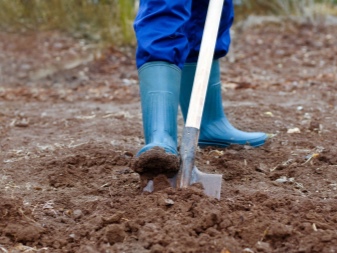
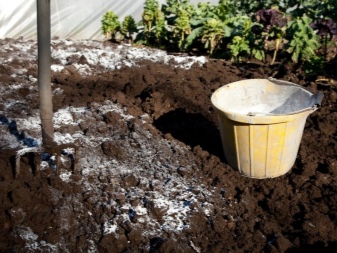
When choosing a location, it is recommended to give preference to sunny areas with little shade during the day.The more shady the place is chosen for planting, the poorer the color palette of the leaf plate will be, and the golden border may not appear at all.
When planting a plant in a single format, as a tapeworm, the size of the hole should be 50 × 50 × 50 cm. If you plan to use a plant as part of a group, there should be at least 2 m to the trunk of a neighboring seedling from the edge of the hole. The exception is hedges. In them, the plants are placed in half-meter trenches, at a distance of 50 cm from each other. To obtain fruits, there must be 2 or more plants of the variety on the site: such a barberry is cross-pollinated and does not form berries in the absence of other representatives of its species.

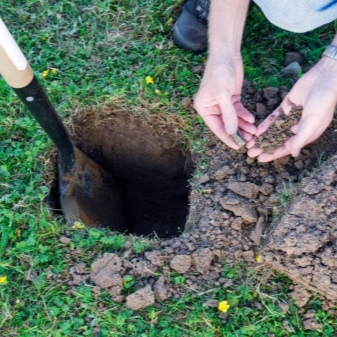
The planting process is as follows.
- After creating a planting pit, drainage is laid on its bottom. Crushed stone, sawdust, broken brick can act in this capacity. The layer thickness is from 10 to 15 cm.
- A soil mixture is prepared based on sand, humus and earth in equal parts. After thorough mixing of the substrate, 60 g of potassium salt and 200 g of superphosphate are added to it for every 10 l. The finished soil mixture is filled with 1/2 of the total volume of the hole.
- The seedling in the container is transferred to the hole by transferring the earthen coma. With an open root system, the plant is placed in the center of the hole, it is carefully straightened. The pit is filled with earth, watering is carried out, waiting for the soil to settle. The root collar does not need to be buried.
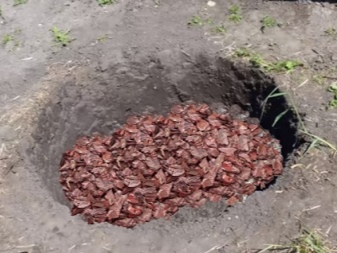
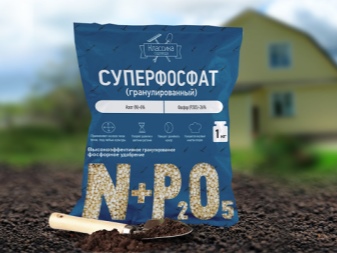
Compaction of the soil is necessary. When planting Golden Ring barberry Thunberg, it is also necessary to add at least 10 liters of water under the root of each seedling. To reduce the number of weeds and maintain soil moisture for a longer time, it is necessary to mulch the near-trunk circle with sawdust, shavings, tree bark, and peat can also be used.
For 1 year, it is better to keep the seedlings away from sunlight, shading them. This will provide a higher survival rate.
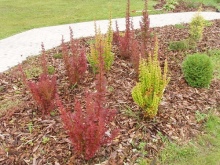
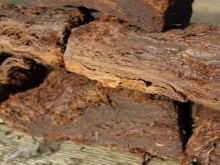
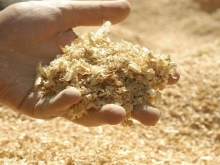
How to take care of it properly?
The main care of the Golden Ring Thunberg barberry is regular watering and feeding. In addition, periodic pruning of the plant will be required to form a beautiful crown. When planted in a hedge, the shrub should receive more attention. It is recommended to regularly trim it to shape, monitor possible pest infestation, and control soil moisture.

Watering and feeding
In the first year after planting, the plant needs regular and abundant watering. Moisture should be applied weekly, under the root, avoiding water getting on the branches and leaves. During this period, there is no need for additional feeding, the substances introduced during the preparation of the soil will be quite enough. For 2 years, you can organize an additional feed for the shrub in the form of ammonium nitrate dissolved in 1 bucket of water, enough volume in the size of a matchbox. This is a dosage for 1 barberry, fertilizer is applied individually for each plant.
In the future, feeding is carried out periodically. It is needed no more than once within 4-5 years. Since the life span of the bush exceeds 60 years, this is quite enough to keep the plant in good shape. An adult shrub also does not require additional watering, especially during a period of heavy rainfall. In dry periods, it will be enough to apply 10 liters of water per plant weekly under the root. So that the water does not stagnate at the roots, and the soil does not dry out without watering, it is recommended to periodically weed and loosen the trunk circle. The depth of excavation should not exceed 3 cm; you can use an aerator or a regular boot. After loosening, the surface of the earth is mulched again.
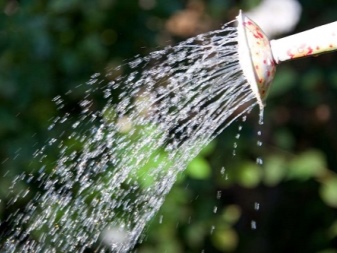

Pruning
Like other shrubs grown for ornamental purposes, the Golden Ring Thunberg barberry variety requires regular pruning. Sanitary removal of damaged or frost-bitten shoots is performed annually. It is carried out in early spring, while all dry and non-viable branches are removed. After sanitary pruning, all treated areas must be lubricated with copper sulfate or garden pitch to prevent the development of diseases in the plant. Shoots of the second year can be processed in the fall.
Formative pruning is performed 2 times a year: at the beginning of summer (after flowering) and at the end of August. In this case, from 2 years old, up to 70% of the shoots are cut off from the bush.
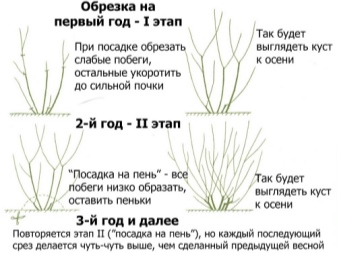
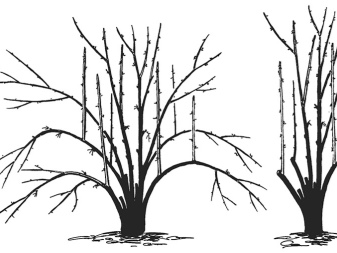
The following manipulations are performed.
- Anti-aging pruning. It is carried out for plants that have never received crown formation or have been left without attention and care for a long time. In this case, in the first year, up to 1/3 of the shoots older than 3 years are removed. The next year, the procedure is repeated again.
- Thinning. In this case, only the strongest shoots of 1 year are preserved. Such pruning is necessary for shrubs with a carefully formed crown. It is carried out annually, removing all unnecessary shoots and shortening them to the ground.
- Pruning for hedges. Some of the shoots are cut at the root, the rest are shortened by 1/3, forming a compact bush with a clear geometry. Lateral shoots become more compact, the plant does not look sprawling, it remains within the specified growth boundaries.
When pruning Thunberg barberry, it is important to remember to protect the hands and body - the bushes are very thorny, they can scratch.

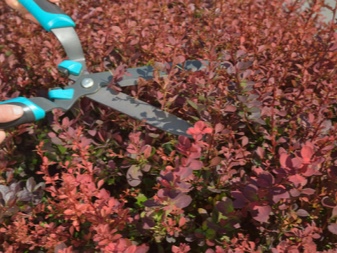
Preparing for winter
The Golden Ring variety, like other subspecies of barberry, does not need special winter preparation. Thunberg barberry is winter-hardy, but if the frosts are very strong, it is still recommended to organize a shelter made of non-woven material and spruce branches for shoots of 1 year. From 2 years after planting, the plant is not covered. After freezing, the bush is quite easily restored, giving young shoots.

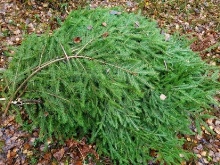

Reproduction methods
All methods of reproduction of Thunberg barberry variety "Golden Ring" can be divided into generative and vegetative. Seed planting belongs to category 1. The collection of material is carried out after full ripening of the fruit. It is freed from the shell, dried, soaked for 20 minutes in a weak solution of potassium permanganate for the prevention of diseases. Sowing is carried out in the pre-winter time, directly into the ground, for natural stratification.
Cutting is one of the most effective ways to propagate Thunberg barberry. On young shoots of the current year, areas are selected up to 10 cm long, with 2 leaves and an internode. At the top, the cutting is cut at a right angle, at the bottom - at 45 degrees.
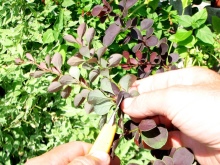
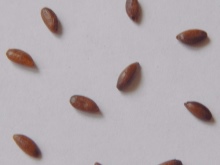

The resulting material is kept in a rooting stimulator for 7 days, then planted in open ground with a shelter in the form of a greenhouse. Watering and loosening at the planting site must be organized on a regular basis - every 2-3 days, until new shoots appear.
Dividing the bush is a breeding method that is relevant for the Golden Ring variety upon reaching the age of 5 years. In this case, the adult plant is dug up, cut into 3 segments, each of which is then rooted as a young seedling. Pit preparation and planting is carried out according to the same rules as with specimens from the nursery.
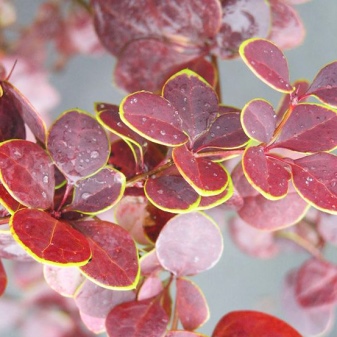

Diseases and pests
Barberry Thunberg Gold Ring is quite resistant to the effects of diseases typical for this type of disease. Of the pests, the fall butterfly and aphids are dangerous for him, against which complex insecticides with an additional anti-mite effect are used. If traces of powdery mildew or signs of rust appear on the leaves, treatment with "Fundazol" or Bordeaux mixture is carried out. For prevention purposes, treatment with colloidal sulfur helps to protect plants.
If the disease is incurable, then all affected shoots and leaves are cut out, then burned.
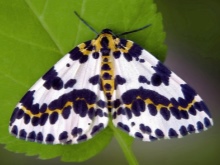

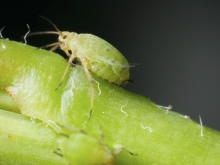
Use in landscape design
Bright and spectacular Thunberg Golden Ring barberry is well suited for use as a tapeworm plant on a lush green lawn.It is possible to combine this variety with other related varieties, using the bright color of the leaves as an element of decoration of the territory. Spectacular group compositions can be obtained by combining Golden Ring with dwarf fir, shrub cinquefoil. A bright bush looks interesting against the background of taller conifers.
All varieties of Thunberg barberry lend themselves well to pruning, suitable for creating landscape figures. Golden Ring can be used to form curbs and hedges. With its help, you can diversify the decor of the rock garden, make it brighter, more multicolored.
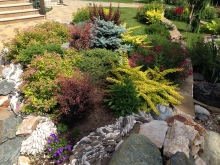
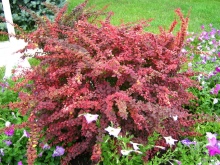
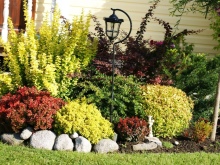
In the next video you will find a brief overview of the Golden Ring barberry Thunberg.



































































The comment was sent successfully.